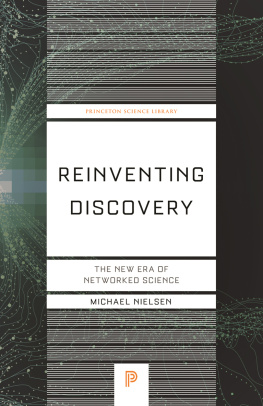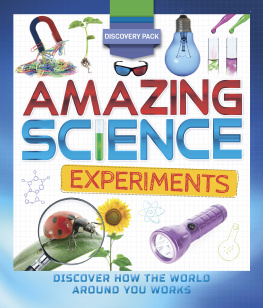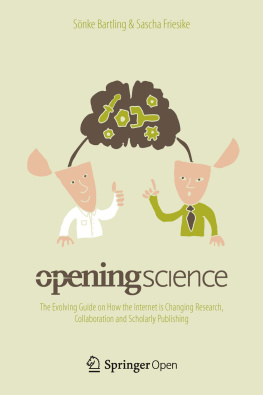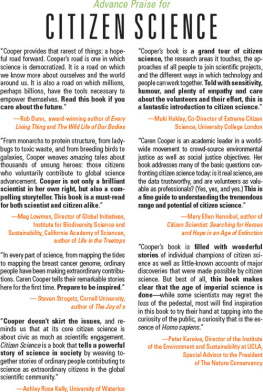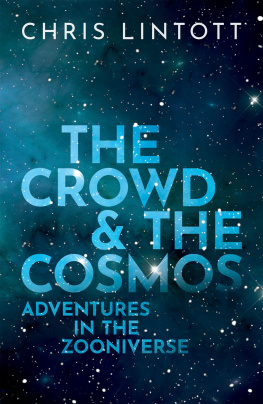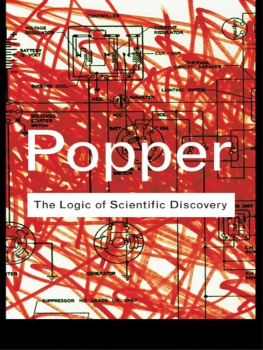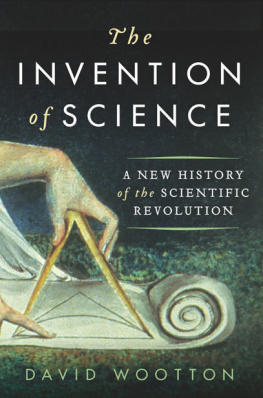REINVENTING DISCOVERY
REINVENTING
DISCOVERY
The New Era of Networked Science
Michael Nielsen
PRINCETON UNIVERSITY PRESS
PRINCETON AND OXFORD
Copyright 2012 by Michael Nielsen
Requests for permission to reproduce material from this work should be sent to Permissions, Princeton University Press
Published by Princeton University Press, 41 William Street, Princeton, New Jersey 08540
In the United Kingdom: Princeton University Press, 6 Oxford Street, Woodstock, Oxfordshire OX20 1TR
press.princeton.edu
Cover art: Inga Tomasevic / iStock
All Rights Reserved
First Princeton Science Library paperback edition, 2020
Paperback ISBN 9780691202846
The Library of Congress has cataloged the cloth edition as follows:
Nielsen, Michael A., 1974
Reinventing discovery : the new era of networked science / Michael Nielsen.
p. cm.
Includes bibliographical references and index.
ISBN 978-0-691-14890-8 (hardback)
1. ResearchTechnological innovations.2. Discoveries in science.3. Internet.4. Information networks.5.Information technology.I. Title.
Q180.55.M4N54 2011
509dc232011020248
British Library Cataloging-in-Publication Data is available
This book has been composed in Minion
Printed on acid-free paper
Typeset by S R Nova Pvt Ltd, Bangalore, India
Printed in the United States of America
Contents
REINVENTING DISCOVERY
CHAPTER 1
Reinventing Discovery
Tim Gowers is not your typical blogger. A mathematician at Cambridge University, Gowers is a recipient of the highest honor in mathematics, the Fields Medal, often called the Nobel Prize of mathematics. His blog radiates mathematical ideas and insight.
In January 2009, Gowers decided to use his blog to run a very unusual social experiment. He picked out an important and difficult unsolved mathematical problem, a problem he said hed love to solve. But instead of attacking the problem on his own, or with a few close colleagues, he decided to attack the problem completely in the open, using his blog to post ideas and partial progress. Whats more, he issued an open invitation asking other people to help out. Anyone could follow along and, if they had an idea, explain it in the comments section of the blog. Gowers hoped that many minds would be more powerful than one, that they would stimulate each other with different expertise and perspectives, and collectively make easy work of his hard mathematical problem. He dubbed the experiment the Polymath Project.
The Polymath Project got off to a slow start. Seven hours after Gowers opened up his blog for mathematical discussion, not a single person had commented. Then a mathematician named Jozsef Solymosi from the University of British Columbia posted a comment suggesting a variation on Gowerss problem, a variation which was easier, but which Solymosi thought might throw light on the original problem. Fifteen minutes later, an Arizona high-school teacher named Jason Dyer chimed in with a thought of his own. And just three minutes after that, UCLA mathematician Terence Taolike Gowers, a Fields medalistadded a comment. The comments erupted: over the next 37 days, 27 people wrote 800 mathematical comments, containing more than 170,000 words. Reading through the comments you see ideas proposed, refined, and discarded, all with incredible speed. You see top mathematicians making mistakes, going down wrong paths, getting their hands dirty following up the most mundane of details, relentlessly pursuing a solution. And through all the false starts and wrong turns, you see a gradual dawning of insight. Gowers described the Polymath process as being to normal research as driving is to pushing a car. Just 37 days after the project began Gowers announced that he was confident the polymaths had solved not just his original problem, but a harder problem that included the original as a special case. He described it as one of the most exciting six weeks of my mathematical life. Months more cleanup work remained to be done, but the core mathematical problem had been solved. (If youd like to know the details of Gowerss problem, theyre described in the appendix. If you just want to get on with reading this book, you can safely skip those details.)
The polymaths arent standing still. Since Gowerss original project, nearly a dozen Polymath and Polymath-like projects have been launched, some attacking problems even more ambitious than Gowerss original problem. More than 100 mathematicians and other scientists have participated; mass collaboration is starting to spread through mathematics. Like the first Polymath Project, several of these projects have been great successes, really driving our understanding of mathematics forward. Others have been more qualified successes, falling short of achieving their (sometimes extremely ambitious) goals. Regardless, massively collaborative mathematics is a powerful new way of attacking hard mathematical problems.
Why is mass online collaboration useful in solving mathematical problems? Part of the answer is that even the best mathematicians can learn a great deal from people with complementary knowledge, and be stimulated to consider ideas in directions they wouldnt have considered on their own. Online tools create a shared space where this can happen, a short-term collective working memory where ideas can be rapidly improved by many minds. These tools enable us to scale up creative conversation, so connections that would ordinarily require fortuitous serendipity instead happen as a matter of course. This speeds up the problem-solving process, and expands the range of problems that can be solved by the human mind.
The Polymath Project is a small part of a much bigger story, a story about how online tools are transforming the way scientists make discoveries. These tools are cognitive tools, actively amplifying our collective intelligence, making us smarter and so better able to solve the toughest scientific problems. To understand why all this matters, think back to the seventeenth century and the early days of modern science, the time of great discoveries such as Galileos observation of the moons of Jupiter, and Newtons formulation of his laws of gravitation. The greatest legacy of Galileo, Newton, and their contemporaries wasnt those one-off breakthroughs. It was the method of scientific discovery itself, a way of understanding how nature works. At the beginning of the seventeenth century extraordinary genius was required to make even the tiniest of scientific advances. By developing the method of scientific discovery, early scientists ensured that by the end of the seventeenth century such scientific advances were run-of-the-mill, the likely outcome of any competent scientific investigation. What previously required genius became routine, and science exploded.
Such improvements to the way discoveries are made are more important than any single discovery. They extend the reach of the human mind into new realms of nature. Today, online tools offer us a fresh opportunity to improve the way discoveries are made, an opportunity on a scale not seen since the early days of modern science. I believe that the process of sciencehow discoveries are madewill change more in the next twenty years than it has in the past 300 years.
The Polymath Project illustrates just a single aspect of this change, a shift in how scientists work together to create knowledge. A second aspect of this change is a dramatic expansion in scientists ability to find meaning in knowledge. Consider, for example, the studies you often see reported in the news saying so-and-so genes cause such-and-such a disease. What makes these studies possible is a genetic map of human beings thats been assembled over the past twenty years. The best-known part of that map is the human genome, which scientists completed in 2003. Less well known, but perhaps even more important, is the HapMap (short for haplotype map), completed in 2007, which charts how and where different human beings can

